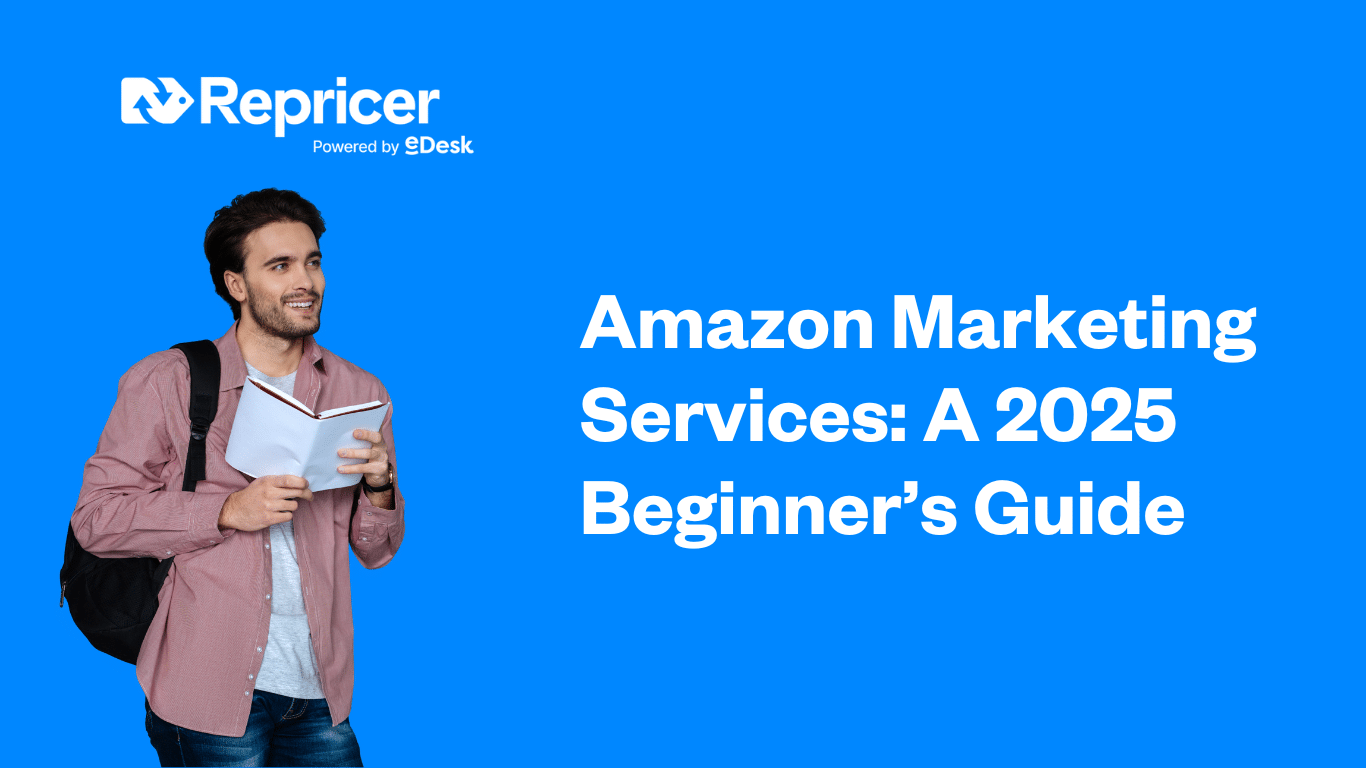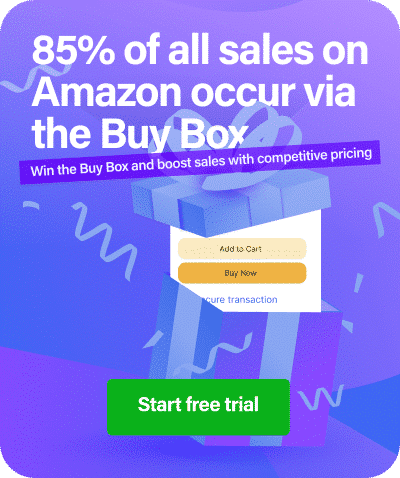Selling on Amazon in 2025 is more competitive than ever, and having great products is (somewhat frustratingly, we appreciate) no longer enough to guarantee success.
So, what’s the needlemover? How can you stand out when the world and his wife are trying to do the same thing?
Don’t worry, we’ve got you covered…
To make a real go of Amazon selling, you first need to understand how Amazon Marketing Services work …and, importantly, how to use them strategically.
In this beginner’s guide, we’ll break down what Amazon Marketing Services are, how they fit into the broader Amazon ecosystem, and how you can use them to drive traffic, increase conversions, and boost ROI. Whether you’re just launching or looking to optimize your performance, this guide is your starting point.
Sound good? Let’s kick off…
What Are Amazon Marketing Services?
Amazon Marketing Services (which you might see referred to as AMS Amazon) is a suite of tools and platforms that help sellers promote their products on Amazon. This includes sponsored product ads, display ads, video ads, and advanced data tools like Amazon Marketing Cloud and Amazon Attribution. (More on those later)
In 2025, these tools are more powerful than ever, integrating deeper with Amazon analytics and offering greater targeting capabilities across the customer journey. When used correctly, they can help you:
- Reach high-intent shoppers
- Improve product discoverability
- Optimize spend using real-time insights
- Scale performance through automation
How AMS Fits into the Amazon Ecosystem
To succeed with Amazon Marketing Services, you need to understand the full marketing ecosystem. AMS is not a standalone solution, by which we mean it works best when paired with other performance levers, such as (but not limited to):
- Amazon PPC campaigns for visibility
- Amazon SEO to improve organic rankings
- Competitive pricing to increase conversions and ad efficiency
Your ads might win impressions, but unless your listings are optimized and competitively priced, your ROI will suffer. Product pricing directly impacts your chances of winning the Buy Box, which plays a huge role in both organic and paid sales performance.
At Repricer, we’ve seen firsthand how pricing optimization fuels ad success by improving click-through rates and lowering ACoS (advertising cost of sale) – which
Key Components of Amazon Marketing Services in 2025
1. Sponsored Ads (Amazon PPC)
These pay-per-click ads appear in search results and on product detail pages. In 2025, Amazon PPC tools now support AI-powered bidding strategies and advanced audience segmentation.
New features also allow for PPC competitive intelligence, helping sellers understand what competitors are spending and how to respond.
2. Display and Video Advertising
These formats help reach customers across Amazon and its affiliate sites. They are ideal for driving brand awareness, especially when launching new or high-demand items.
With Amazon’s demand-side platform (DSP), you can now retarget shoppers who viewed your products but didn’t buy—turning lost traffic into future sales.
3. Amazon Marketing Cloud (AMC)
AMC is a data clean room that lets you analyze how shoppers interact with your ads, products, and brand across Amazon. It gives insight into full-funnel performance and lets you create custom attribution models.
For sellers serious about scaling, AMC is a must-have to unlock smarter budgeting and campaign design.
4. Amazon Attribution
This tool allows sellers to measure how off-Amazon marketing (like Google ads, social media, or email) impacts Amazon sales. It’s an essential piece of the Amazon flywheel, helping sellers understand which channels truly move the needle.
5. Amazon Analytics and Performance Dashboards
From A/B testing creatives to tracking Buy Box metrics, Amazon’s analytics tools have grown exponentially. Sellers can now integrate these insights into external platforms, improving decisions around inventory, pricing, and budget allocation.
Why Product Pricing Impacts Ad ROI
Imagine spending thousands on ads only to lose sales to cheaper competitors. That’s the reality if your pricing isn’t optimized.
Amazon favors competitively priced products in both organic and paid placements. If your price is too high, your ad performance drops. If it’s too low, you may drive traffic without profit. Dynamic repricing tools help you find the sweet spot by balancing margins with Buy Box eligibility.
Combining smart pricing strategies with marketing efforts is what drives long-term success, and what makes the difference in crowded categories.
Tying It All Together
To win in 2025, Amazon sellers need to align marketing, pricing, and optimization efforts. That means:
- Using Amazon advertising services to generate demand
- Improving listings with Amazon SEO
- Running profitable Amazon PPC campaigns
- Monitoring trends in high-demand items and supplier pricing
- Leveraging Amazon analytics to adjust strategy in real time
Success on Amazon isn’t just about visibility; it’s about visibility that converts. And that starts with a foundation built on smart pricing and data-led marketing.
Ready to Supercharge Your Amazon Strategy?
Repricer helps sellers stay competitive and profitable by automating the one thing that directly affects your ad ROI: pricing.
Book a Demo today to see how real-time repricing can work alongside your Amazon Marketing Services strategy to help you sell more and waste less.





